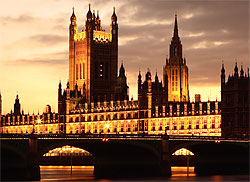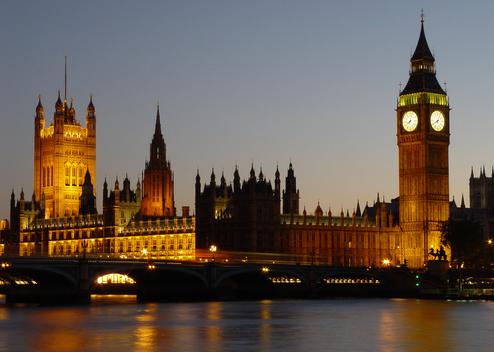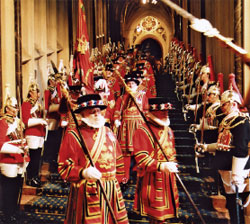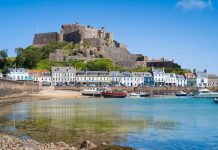Step inside London’s most famous landmark and follow its 1,000-year journey from ancient palace to modern-day parliament

It’s one of the most iconic buildings in Britain, if not the world, and the most famous part of the Houses of Parliament. The clock tower that houses the great bell ‘Big Ben’ may be celebrating its 150th birthday this year, but the history of this institution stretches back beyond even the first parliament to sit here in 1265.
Once known as Thorney Island – a desolate, bramble and marsh-laden islet off the north bank of the Thames a mile outside the then London – the area was described as “a terrible place” in a charter of the 8th-century King Offa of Mercia. Little had improved three centuries later, when Edward the Confessor came to the throne and began rebuilding the island’s humble monastery church – the minster west of the City of London that gives the area its modern name – on the instructions of the Pope.
Edward also decided to build a royal palace alongside his grand new Westminster Abbey. Although no monarch has lived on the site since King Henry VIII moved out in 1515, the modern Houses of Parliament – or the Palace of Westminster, as the buildings are still officially designated – are the direct descendant of this royal residence, a history of almost 1,000 years.
Today, little but the location remains of Edward the Confessor’s palace – the oldest part of the current complex is now Westminster Hall, built in 1097 by the son of William the Conqueror. This imposing, cavernous space – leading off the main St Stephen’s entrance to the palace – remained the largest hall in Europe for three centuries, its grandeur increased further by the addition of its impressive wooden hammerbeam roof in the late 14th century.
|
|
For centuries Parliament had no real home of its own.
Instead, the old meeting place for the House of Commons was the tiny 13th-century chapel of St Stephen, which lay on the site of what is now the main passage from Westminster Hall to Central Lobby.
If you have a meeting with a Member of Parliament(MP) or peer, or manage to get a ticket to attend a debate, chances are that it is Central Lobby where you will be asked to wait. This circular chamber lies at the very heart of the Palace of Westminster, with grand passages leading from here to each of the two debating chambers of the Houses of Parliament – the House of Commons to the north and the House of Lords to the south.
The lobby, a gloriously ornate and gilded example of early Victorian neo-gothic ostentation by Pugin, may not be massive but it never fails in its prime aim: to overwhelm the visitor with sheer grandeur. While Westminster Hall may be impressive for its size and age, it is deliberately left looking gloomy and dour – enter Central Lobby, the heart of the world of British politics, and you will be left in no doubt where the real power lies in these buildings.
The symbolism of the decoration continues as you enter either of the Houses of Parliament. The House of Lords is all stately crimson and gold, with ornamentation in the Painted and White chambers as well as the main debating chamber, which houses the golden throne, occupied by the monarch once a year for the State Opening of Parliament.
On the Commons side, the colour green dominates, while the decoration is far less lavish – a deliberate ploy to depict MPs as more humble and closer to the people than the ostentatious Lords. Rebuilt in the early 1950s, after being destroyed by bombing during World War II, the current Commons chamber is even more symbolic than the original – on the orders of Winston Churchill it was rebuilt too small to accommodate every MP. The reason? To make the chamber – and thus Parliament itself – appear more full and busy to visiting members of the public.
Symbolism also dominates countless parliamentary traditions – the most famous being the grand State Opening, held every autumn as well as after general elections. Ever since the Civil War, prompted in part by Charles I’s attempt to arrest members of parliament for dissent – an attempt thwarted by MPs slamming the doors and refusing him entry – no monarch has been allowed within the Commons chamber. As such, to underscore the independence of Parliament, the Queen’s request for MPs to attend the State Opening of Parliament is still met by the Commons’ door being slammed in her messenger’s face.
The door to Parliament is always open to the public. It is possible to attend debates at any time, simply by turning up on the day and joining the queue – though on Wednesdays the Prime Minister attends the Commons to answer questions, and places are so limited that even MPs can’t be sure of getting a seat. However, the best method of seeing some of the lesser-known parts of this iconic building is to go on one of the official tours conducted during the summer, when Parliament is in recess. It’s the perfect chance to see areas often those who work there don’t know about, with knowledgeable guides on hand to reveal yet more of this sprawling, labyrinthine building’s most intriguing secrets and traditions.
Big Ben
 Sir Charles Barry’s new design for the Houses of Parliament in 1840 featured an ornate 320ft clock tower – to be named St Stephen’s Tower after the chapel that housed the Commons in the burned down palace. The tower became popularly known as Big Ben, although Big Ben is actually the name of its 13-ton bell – the second to be attached to the iconic clock after the first one broke during testing.
Sir Charles Barry’s new design for the Houses of Parliament in 1840 featured an ornate 320ft clock tower – to be named St Stephen’s Tower after the chapel that housed the Commons in the burned down palace. The tower became popularly known as Big Ben, although Big Ben is actually the name of its 13-ton bell – the second to be attached to the iconic clock after the first one broke during testing.
The name supposedly comes from the 18-stone Victorian boxer Benjamin Caunt, who hung up his gloves in September 1857, the month that Big Ben’s predecessor cracked – big boxer and big bell retiring together. This year sees the tower celebrate its 150th birthday – the clock having finally been installed, after much delay, on 31 May 1859.
For details on the different ways to visit Parliament, go to www.parliament.uk.







 © 2024
© 2024